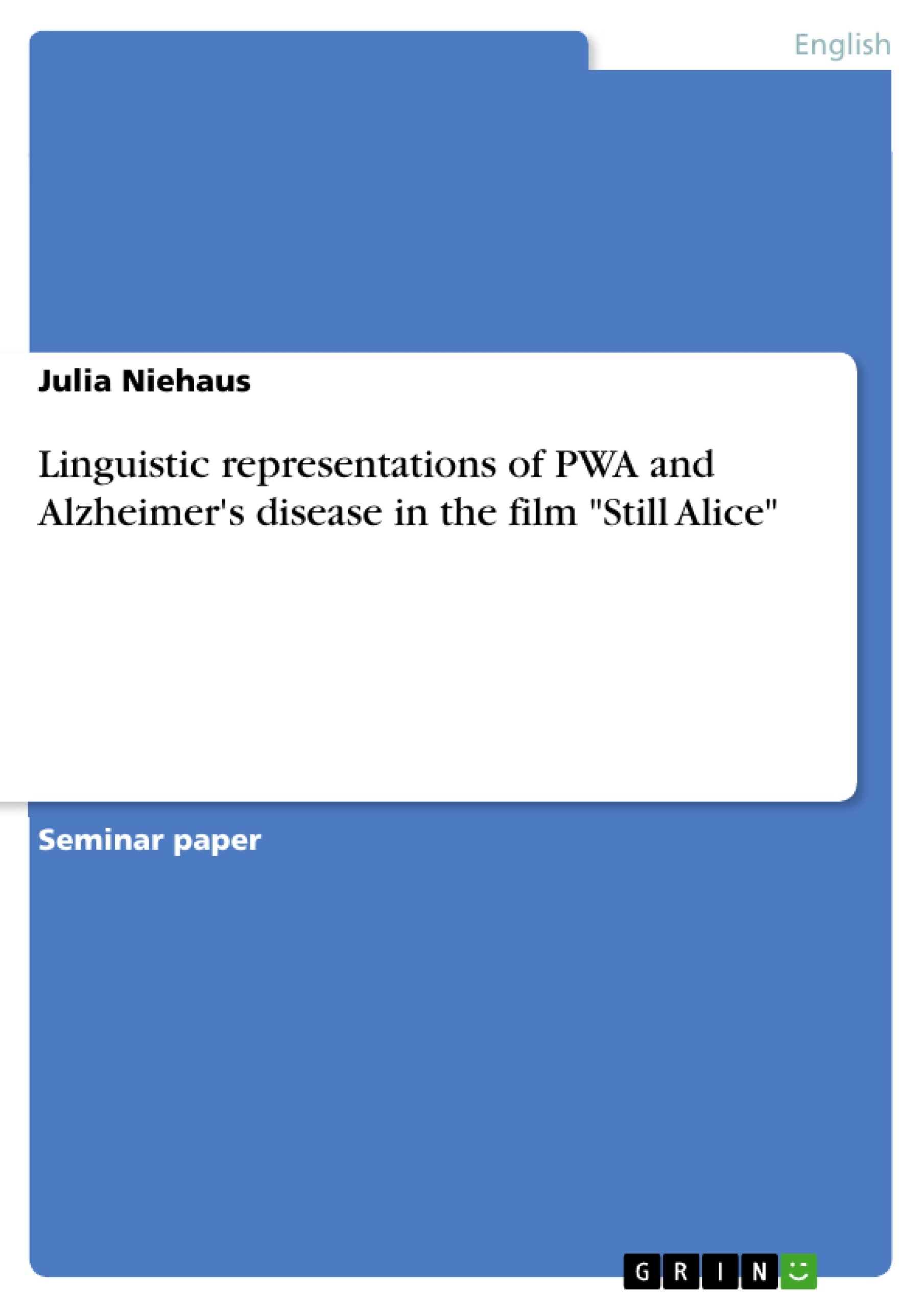In the first half of this paper, one is presented with the theoretical background of Alzheimer’s disease. The different stages of Alzheimer’s disease, its connection between language and the brain and the specific language impairments specifically connected to Alzheimer’s disease, are examined, and portrayed.
Firstly, it is important to briefly outline what Alzheimer’s disease is and how it can be diagnosed and treated.
After this, the second step is establishing the different stages of the disease, as this helps linking certain symptoms to the progress and status of the illness and analyzing whether the representation is accurate or not.
Then, language and the Alzheimer’s brain are closer investigated and portrayed, as this is crucial to understanding how linguistic impairment is even linked to Alzheimer’s and how the symptoms arise over the course of the illness.
Lastly, the different language impairments will be outlined, and their symptoms will be examined further.
All the chapter of the first part of the paper form the theoretical basis that is not only necessary for the ability to recognize linguistic representations of Alzheimer’s disease in the film in the first place, but also for the ability to analyze and draw conclusions about those representations in a broader, theoretical context. They build the framework for the analysis and the conclusions drawn later on in this paper and therefore are crucial as they are continuously referred to later on.
The second part of this paper then specifically uses the previously attained knowledge and analyzes in how far and in what way it is represented in the film “Still Alice”.
Firstly, the movie and its plot are briefly explained and displayed, so that the following chapters are not left without context and to give more context on the setting and circumstances of the subject of analysis.
After this, data is collected by watching the film, reading the script and parallel to this examining the prevalence of the represented linguistic symptoms in each of the three parts of the film “Still Alice”. This is a qualitative approach to data collection and is based on a certain list of symptoms that are counted throughout this process.
Inhaltsverzeichnis (Table of Contents)
- 1. Introduction
- 2. Alzheimer's Disease
- 2.1 Stages of Alzheimer's Disease
- 2.2 Language and the Alzheimer's Brain
- 2.3 Language Impairments
- 2.3.1 Word- Finding and Lexical Processing Problems
- 2.3.2 Understanding and Producing Language
- 2.3.3 Syntax
- 2.3.4 Discourse
- 3. Analysis of linguistic symptoms of PWA in the film "Still Alice"
- 3.1 The film "Still Alice"
- 3.2 Data Collection and Analysis
- 3.2.1 Part One
- 3.2.2 Part Two
- 3.2.3 Part Three
- 4. Conclusion
Zielsetzung und Themenschwerpunkte (Objectives and Key Themes)
This paper aims to explore the linguistic representation of Alzheimer's disease in the film "Still Alice". It examines to what extent the film accurately portrays the linguistic aspects of the disease, contributing to a greater understanding of Alzheimer's disease and its impact on language.
- Linguistic representation of Alzheimer's disease in film
- The impact of Alzheimer's on language and communication
- The stages of Alzheimer's disease and their associated linguistic symptoms
- Analysis of the film "Still Alice" through a linguistic lens
- Raising awareness about Alzheimer's disease and its effects
Zusammenfassung der Kapitel (Chapter Summaries)
The first chapter introduces the topic of Alzheimer's disease and its growing significance as a public health crisis. It highlights the increasing prevalence of the disease and the lack of general awareness about its impact on language.
Chapter two delves into the theoretical background of Alzheimer's disease. It outlines the different stages of the illness, the connection between language and the brain, and the specific language impairments associated with Alzheimer's disease.
Chapter three focuses on the analysis of linguistic symptoms of people with Alzheimer's disease (PWA) in the film "Still Alice". This chapter examines the film's plot and explores the prevalence of linguistic symptoms in different parts of the film.
Chapter four (not included in this preview) likely draws conclusions based on the analysis of the film "Still Alice" and discusses the broader implications of the findings.
Schlüsselwörter (Keywords)
Alzheimer's disease, dementia, language impairment, linguistic representation, film analysis, "Still Alice", PWA, word-finding difficulties, lexical processing, syntax, discourse, awareness raising.
- Quote paper
- Julia Niehaus (Author), 2020, Linguistic representations of PWA and Alzheimer's disease in the film "Still Alice", Munich, GRIN Verlag, https://www.hausarbeiten.de/document/1389439



